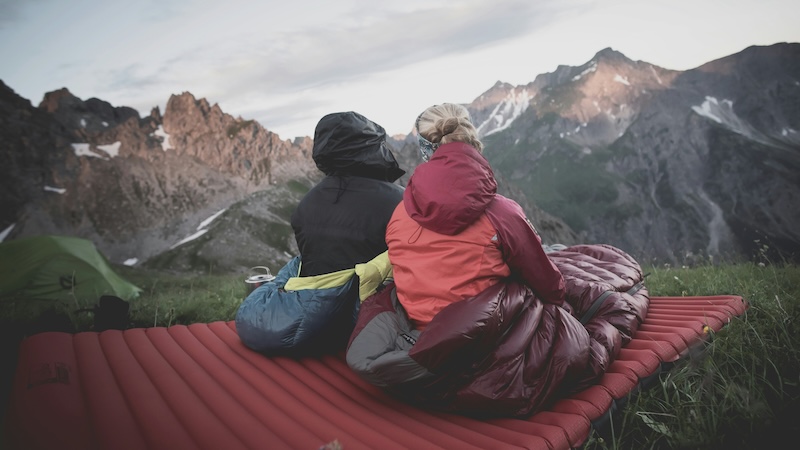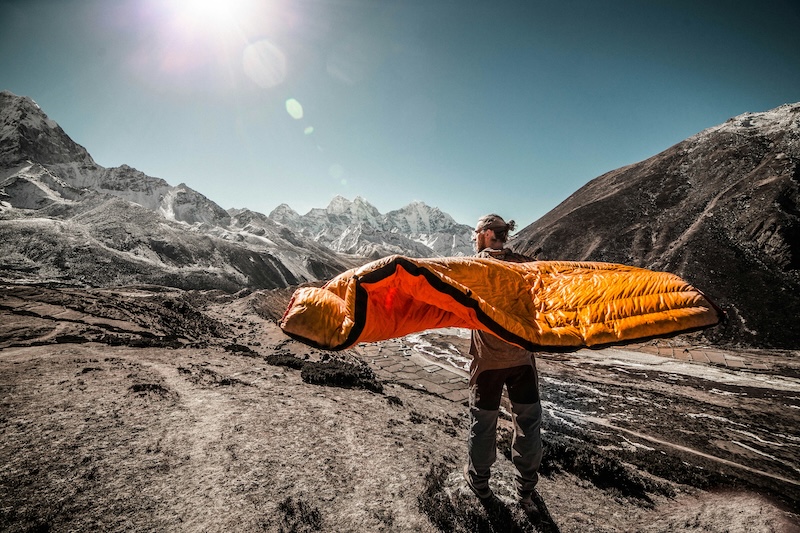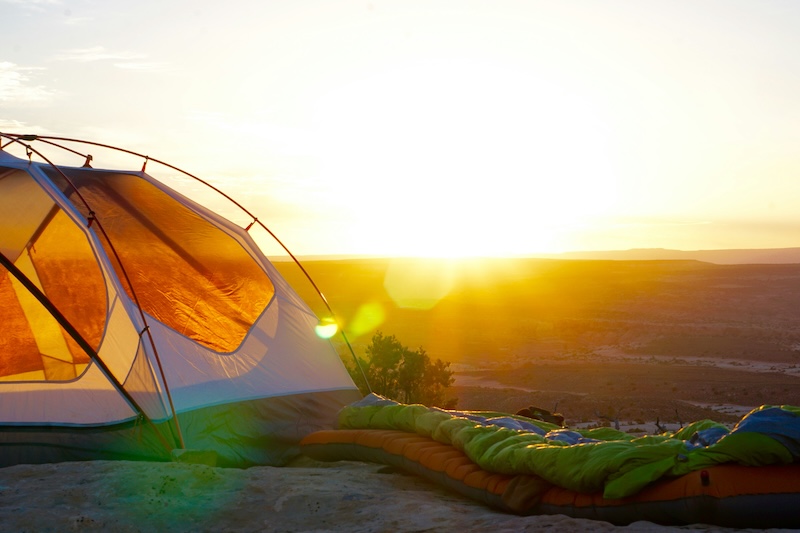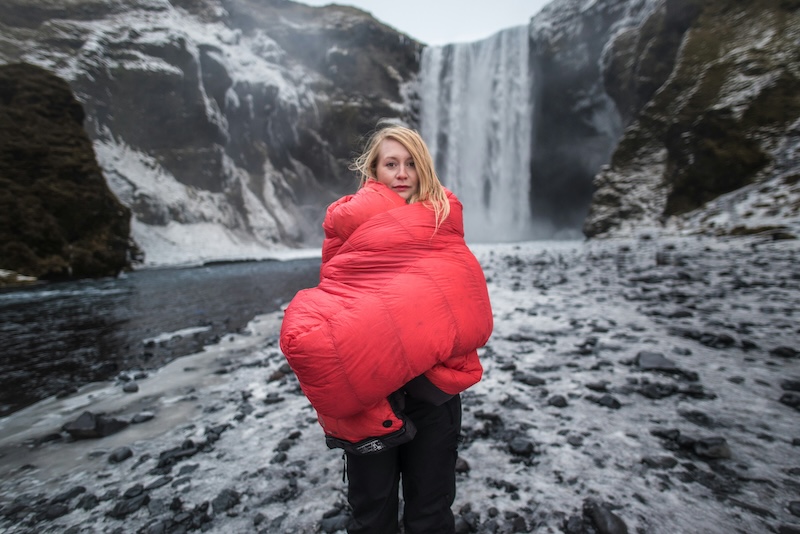Choosing the perfect sleeping bag can be challenging, especially if you have never purchased one before. There are so many different types and features to choose from, as well as considering what season and how you will use the sleeping bag.
So, here is a guide that takes you through season ratings, sizes, shapes and more to allow you to narrow your choice and purchase your sleeping bag today.

Consider the season ratings
Season ratings make it easier for you to choose the perfect sleeping bag for your next trip. The season ratings are from one to four, with one being designed for summer use and four for cold winter nights. It’s important that you consider the season rating to ensure that the sleeping bag will be suitable for the season you intend to use it in:
- 1-season sleeping bags are designed for indoor use or camping on warm, summer nights
- 2-season sleeping bags are used for late spring and early autumn when the nights start to get cold. They are also suitable for those who feel the cold during the summer
- 3-season sleeping bags are used in cold autumn and winter nights when there is no frost
- 4-season sleeping bags can be used on cold winter nights when there is snow or frost on the ground
Consider the temperature ratings
Temperature ratings are an essential factor to consider to ensure you are comfortable while sleeping. The rating you choose depends on where you are using the sleeping bag and the temperature you are comfortable sleeping in.
It is also worth thinking about whether you are generally a cold sleeper or a warm sleeper. If oyu get cold at night, choose a warmer sleeping bag.
Temperature ratings are divided into comfort and extreme ratings and are based on the outside temperature. We have more information you need to consider on them below:

Comfort ratings
Comfort ratings refer to the optimum temperature at which you will feel comfortable and warm sleeping in the bag. If the bag is used in any temperature below the comfort rating, you will likely feel the cold and will need to consider further heating options. Generally, women feel the cold more than men, so this rating is a few degrees above the comfort limit for a man.
Extreme ratings
Extreme ratings are the survival temperature, which is the limit that the bag will keep you alive without frostbite or other temperature-related conditions. The extreme rating is not the lowest temperature you will be comfortable in, and it is not advised that you use the sleeping bag regularly at this temperature.
Consider the material
You will typically have two sleeping bag materials to choose from: Down or synthetic. Down sleeping bags are made using fine feathers from geese or ducks, while synthetic sleeping bags are made with man-made insulation, usually poly-fibres. Both materials have their own sets of pros and cons, which should be considered:
Synthetic sleeping bags
- Retain insulation when damp or wet
- Easier to clean
- More affordable option
- Shorter lifespan than down sleeping bags
- Do not retain the heat as well as down
Down sleeping bags
- Fantastic heat retention
- Lightweight design provides a better warmth-to-weight ratio
- Wider comfort temperature range, allowing you to use them in cold and warm temperatures
- Easier to compress and pack small for effortless transportation
- Longer lifespan if you care for them properly
- Lose their heat insulation ability when wet
- Longer drying time
- They can be more expensive and require special cleaning, which can increase the long-term costs.

Consider the shape and size
The shape and size are important factors to consider when choosing a sleeping bag. You want to ensure that the sleeping bag is large enough for you to sleep comfortably, while being light enough for you to carry. We have detailed the popular shapes and sizes of sleeping bags below:
Regular sleeping bags
Rectangular sleeping bags feature an envelope shape with a zip on two sides. These can be fully opened and used as a blanket if you prefer, making them a good choice for sharing. Rectangular sleeping bags are recommended for warmer weather as their spacious design provides a cooler bag.
Mummy sleeping bags
Mummy sleeping bags taper towards the feet, making them more fitted than rectangular sleeping bags. The goal is to provide better heat retention with this design, making them perfect for colder weather. You will enjoy a tighter body fit and a hood to keep your head warm.
Mummy sleeping bags tend to be lighter than rectangular sleeping bags and are suitable for stuffing in your bag and taking on long hikes without worrying about the added weight.
Long length sleeping bags
Long length sleeping bags are suitable for anyone over six feet, as they measure 220 x 80 x 50 cm. They will provide extra leg room so you don’t feel cramped in the sleeping bag, while still providing the warmth and protection of regular sleeping bags.
Extra-long sleeping bags
Extra-long sleeping bags will typically measure 230 x 105 x 70 cm and are perfect for taller people or anyone who appreciates more room.
Double sleeping bags
Double sleeping bags are designed for two people to share and can be found in down and synthetic materials.
Consider the features
It is also worth considering the features the sleeping bag comes with to help you narrow your choice and find one that suits you and the type of camping you plan to do. The common features to look out for are detailed below:
- Stuff sack – features a draw string closure that makes it easier to stuff into its bag for easy packing after your drip
- Inner pockets are typically found at the top of the bag and are perfect for keeping valuables safe and close by
- Draft collar – is an insulated collar at the base of the hood to prevent heat from escaping and keep you warm around your neck and shoulders
- Hood – will prevent you from losing heat. Draw cord closures are typically used to pull the hood tight to your face for extra warmth
- Zip cover – stops the zip from coming undone as you sleep
- Zip baffle – insulates the zip to prevent any additional heat from being lost
- Two-way zip – allows you to create a double sleeping bag if you purchase two of the same style
- Left and right-hand zips – make it easier for you to choose the perfect zip for easy access. Right-handed people should choose a left bag and left-handed people a right bag
- Outer fabrics – are usually made from nylon ripstop to provide durability. Dryloft is another option, made with water-resistant and breathable fabric
- Inner linings – polyester and nylon are typically used. Cotton or flannel is also an option, but they can trap moisture, making them unsuitable for cold conditions
- Baffles – are the compartments in the sleeping bag that hold the filling, making sure it’s evenly distributed
Choose your sleeping bag today
By making these considerations, you can more easily narrow your choice and find the perfect sleeping bag for your needs. Whether you plan to camp year-round or just in the summer months, you can find a sleeping bag that will keep you dry and toasty. When shopping for your sleeping bag, we recommend checking out Torpedo 7, who offer a huge range of sleeping bags that are perfect for any aspect of New Zealand’s climate! Head to Torpedo 7 to find your new sleeping bag today.


